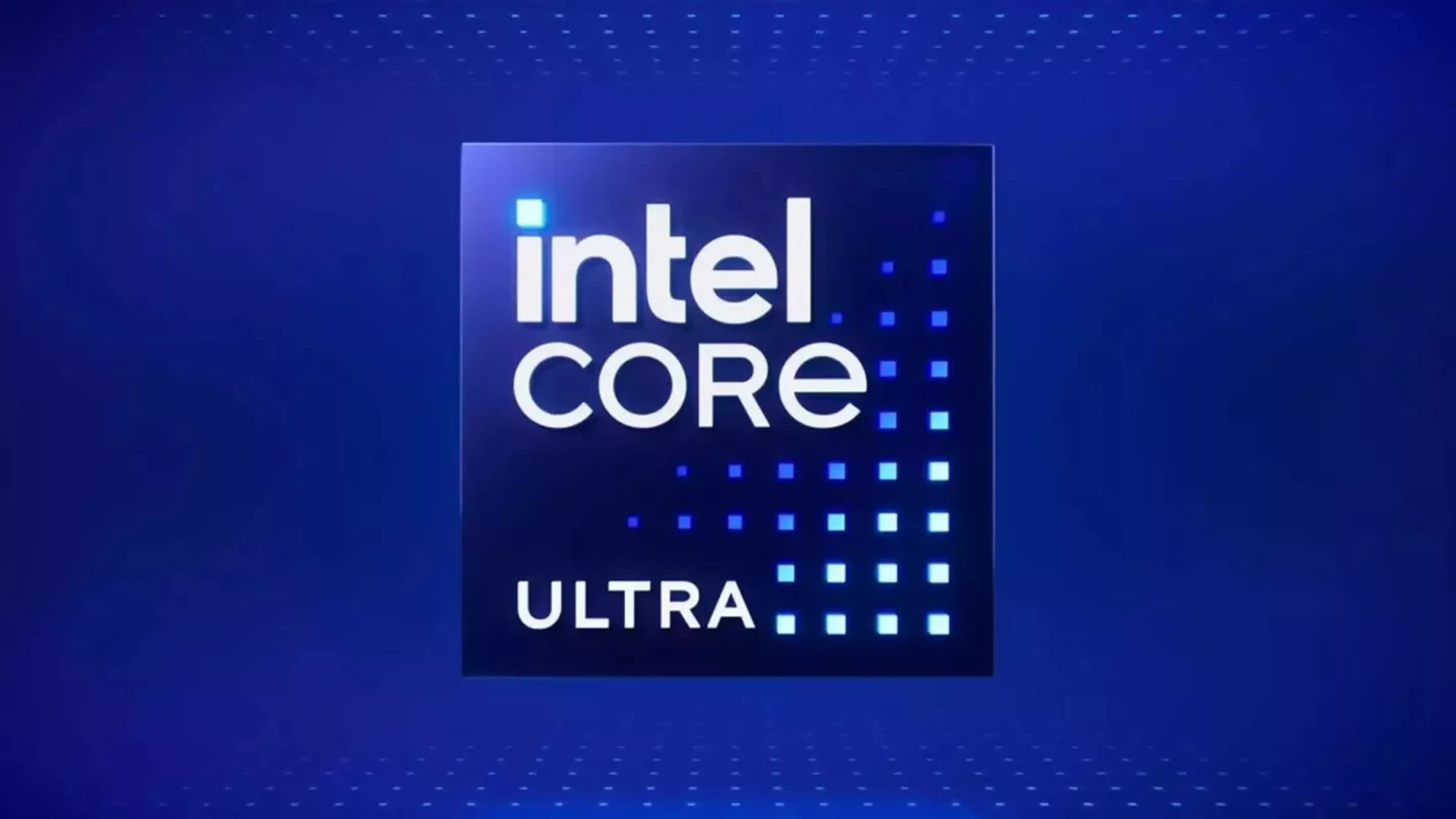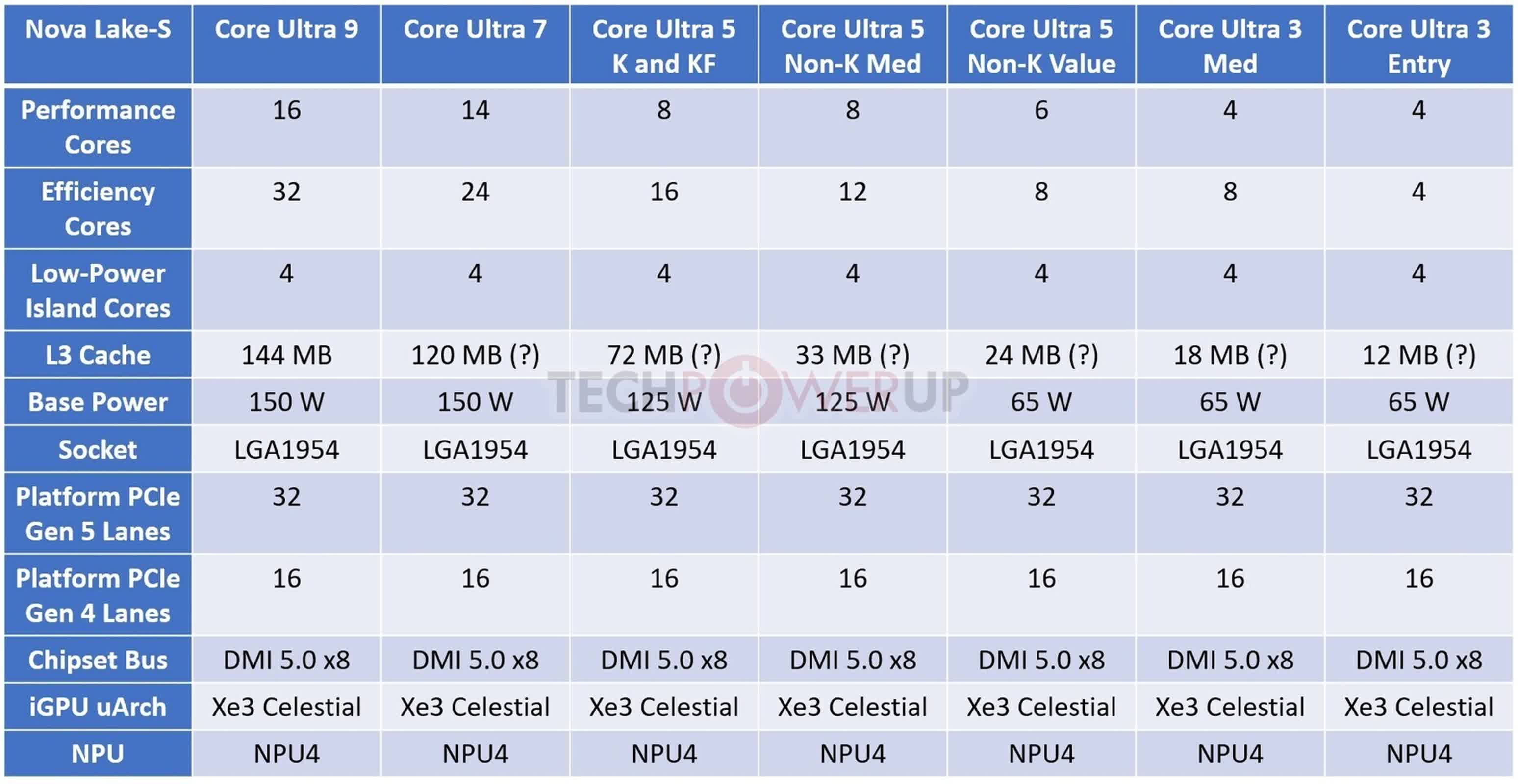Highly anticipated: Intel is preparing to make a dramatic leap in desktop computing performance with its upcoming Nova Lake-S processors, aiming to significantly increase core counts for both consumers and professionals. This next-generation lineup, expected to launch in 2026, is designed to push the boundaries of multi-threaded performance, power efficiency, and platform connectivity.

At the heart of Intel's strategy is a flagship model expected to feature an unprecedented 52 cores. This high-end chip combines 16 high-performance "Coyote Cove" cores, 32 efficient "Arctic Wolf" cores, and four additional low-power island cores. These low-power cores are located in a separate part of the chip and are optimized to handle background tasks with minimal energy consumption – an approach similar to that introduced with Meteor Lake.
The Core Ultra 9 version, featuring this maximum core configuration, is expected to ship with a base power rating of 150W. The expanded core layout is complemented by a large L3 cache – reportedly up to 144MB in the top-tier model – which should benefit demanding workloads such as gaming and data-heavy applications.
Intel is also rolling out generational upgrades across the rest of its desktop lineup. The Core Ultra 7 SKUs are expected to feature 14 performance cores, 24 efficient cores, and the same four low-power island cores, bringing the total to 42 cores. These chips are also projected to retain a 150W base power envelope at the high end.
In the mid-range segment, the Core Ultra 5 processors will come in three distinct configurations, with core counts ranging from 18 to 28. These models will feature varying combinations of performance and efficiency cores. At the entry level, Core Ultra 3 processors are expected to launch with 12- and 16-core variants, targeting compact or budget-friendly systems and operating at a more modest 65W base power.
Beyond core counts, platform connectivity is also set for a major upgrade. Intel plans to equip Nova Lake-S motherboards with up to 32 PCI Express 5.0 lanes and 16 PCIe 4.0 lanes, providing ample bandwidth for modern GPUs and high-speed storage devices.
For the main chipset connection, Intel will adopt DMI 5.0, offering speeds comparable to PCIe 5.0 x8 on flagship boards. Lower-tier boards will feature slightly reduced – but still substantial – bandwidth.
Another key improvement is the integrated graphics solution. Nova Lake-S chips will incorporate the next-generation Xe3 "Celestial" GPU architecture, promising noticeable generational gains over current desktop offerings. While the desktop variants will include a more modest version of this iGPU compared to their mobile counterparts, users can still expect solid entry-level gaming and strong everyday performance.
Every Nova Lake-S processor will also include a dedicated neural processing unit, in line with Microsoft's requirements for running Copilot+ AI features locally.
Intel is expected to manufacture Nova Lake-S using advanced process technologies, including TSMC's 2nm node for select components, as it continues refining its multi-tile design approach. Early indications point to a consumer launch in the second half of 2026, marking one of Intel's most ambitious overhauls of its desktop CPU lineup in years.
Image credit: TechPowerUp
Intel next-gen desktop CPUs to feature 12-52 cores across Core Ultra 3, 5, 7, and 9 SKUs
